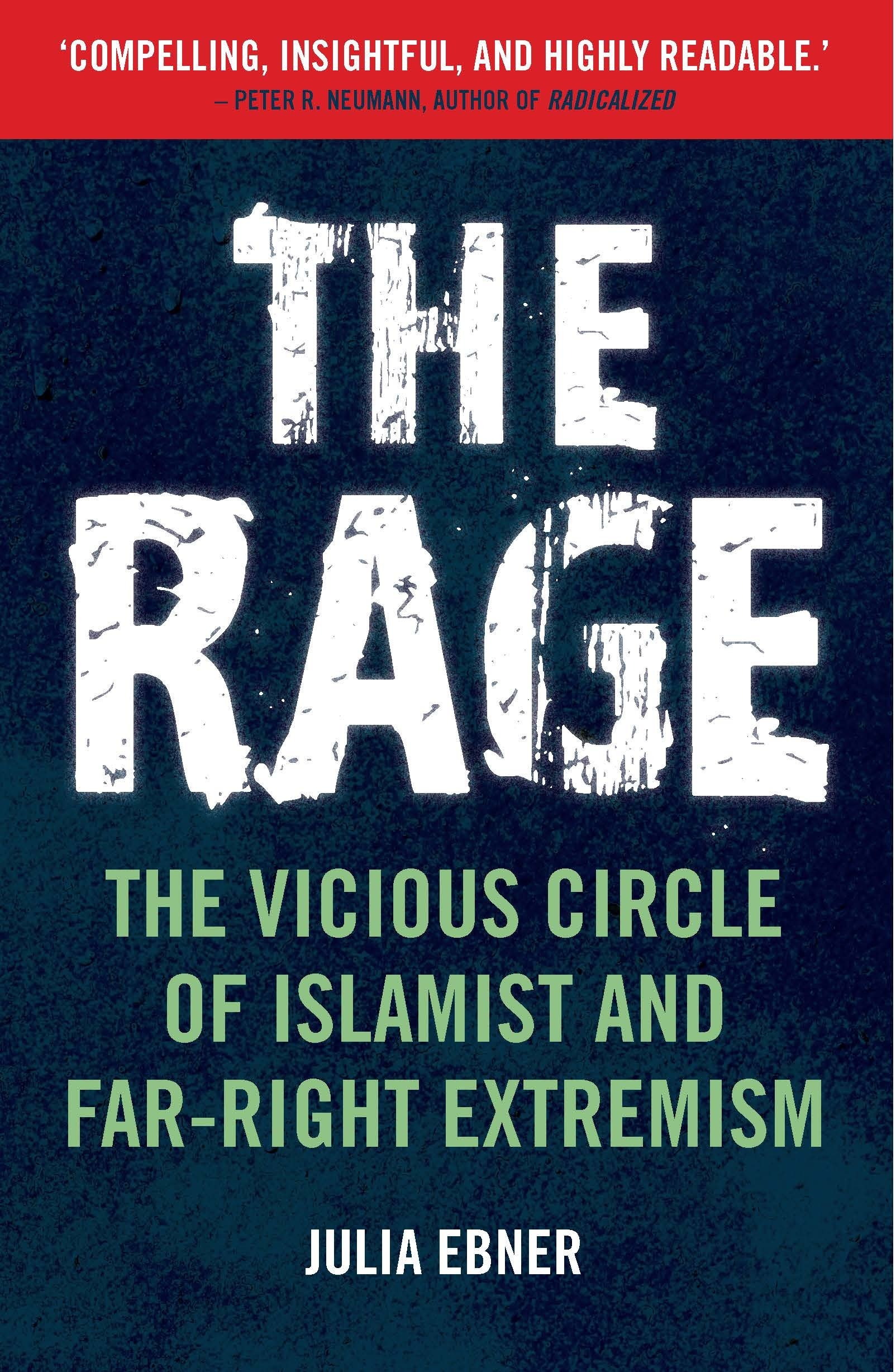
This article is a preview from the Spring 2018 edition of New Humanist.
The Rage: The Vicious Circle of Islamist and Far-Right Extremism (IB Tauris) by Julia Ebner
It has now become routine. An Islamist terrorist attack occurs – confirmed or suspected, – and out leap Katie Hopkins, Tommy Robinson, Donald Trump and others of their ilk. However much they proclaim their outrage, it is hard not to detect the sheer relish in their denunciations.
As Julia Ebner shows in her new book, The Rage, this now predictable sequence of attack and denunciation is inevitably followed by far-right attacks on Muslims. That, in turn, fuels the fire of Islamic extremism, laying the groundwork for the next incident. This isn’t just a vicious circle, it is also self-reinforcing, creating new recruits for Islamic and far-right extremism, undermining the middle ground. One could suggest that there is a de facto alliance between these two poles, a cooperative attempt to create the conditions for a final, apocalyptic battle.
Although she doesn’t use the term alliance, Ebner demonstrates the deep commonalities between far-right and Islamic extremists. A researcher at the Institute for Strategic Dialogue and, prior to that, the Quilliam Foundation, Ebner’s work draws on interviews and undercover observations of extremist movements, both on- and offline.
Ebner was, briefly, a target for abuse and harassment following the publication of a video in which EDL founder Tommy Robinson shouted questions at her at the Quilliam offices. Robinson had objected to her calling him a “white supremacist” in an article. While the experience was unnerving, it is to Ebner’s credit that she has tried to learn from it. “This episode taught me to be more careful about associating individuals with labels,” she writes. “Listening to extremists without pandering to them and challenging thought leaders without dehumanising them is a difficult balance to strike. But it will be necessary to tackle the sources of extremism.”
This does not mean that her research findings are any less hard-hitting. She shows how far-right and Islamic narratives are similarly simplistic and consistent, how they provide clear responses to real grievances and inspirational stories to angry people. Crucially, both movements are based on an overpowering sense of victimhood, one that can only be resolved through wiping out the enemy.
By putting narrative at the centre of her analysis, Ebner refuses to make a distinction between violent and non-violent extremism. While there are strategic differences between these two approaches, she argues that they are underpinned by the same stories and that there is an easy slippage between one and the other.
The focus on narrative also means that Ebner doesn’t see “ideology” as the primary driver of extremism. Extremism can be a warped response to real social pathologies. While Islamists do come from a range of socioeconomic conditions, the experience of racism is a frequent common denominator; she also takes seriously the burning resentments of the “left behind” working class. In one of the most fascinating chapters of the book Ebner shows how processes of “reciprocal radicalisation” occur in particular locations, where Islamists and the far right both take advantage of difficult social conditions. Such locations include Dewsbury in England, and various towns and deprived suburbs in France and Germany.
The Rage raises the difficult question of how to break this vicious circle. Ebner makes a plea for nuance and highlights the brave individuals who have left extremist groups. She shows how pioneers are developing forms of Islam that reject binary thinking. In the last pages, she writes:
In binary stories with human opponents, the logical consequence of collective action is usually a war or a genocide. But what hinders us from telling stories with abstract antagonists instead of human ones? Could global challenges make for good common antagonists? We have more than enough common problems – climate change, environmental degradation, poverty, hunger, to name just a few – and they will all require internationally concerted efforts. Replacing human antagonists with abstract ones may be the biggest challenge but also the biggest opportunity of the twenty-first century.
I can’t decide whether this is naïve or visionary. In some respects, extremists do treat humans as abstractions anyway, so could a non-human “replacement” direct their energies more productively? Probably not, but it’s hard to look at the rage-filled dynamism of far-right and Islamic extremists, and the “cooperation” between them, without a certain grief for the lost opportunities for human betterment they represent.

